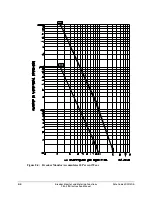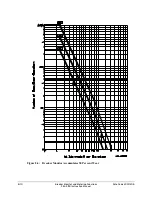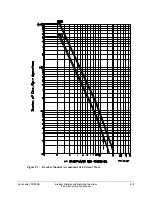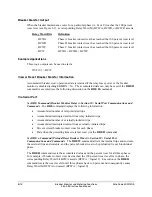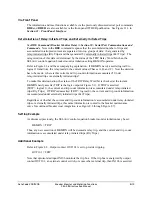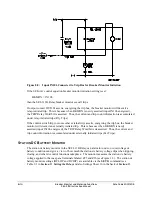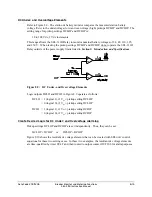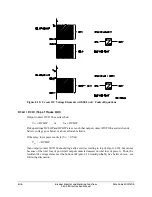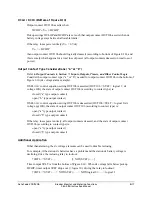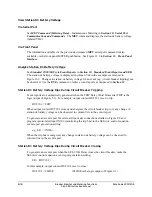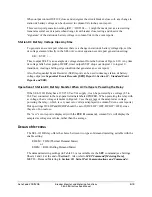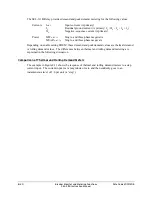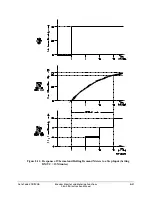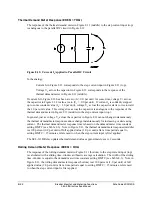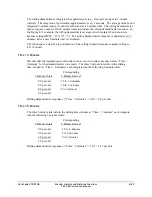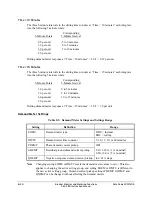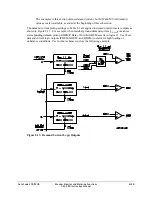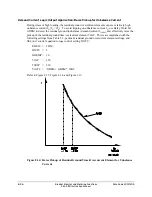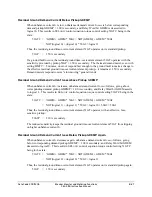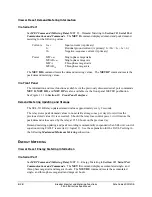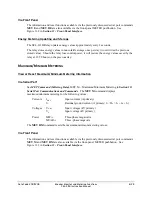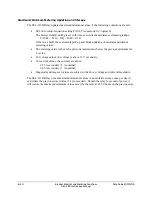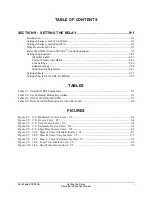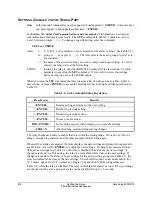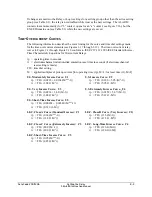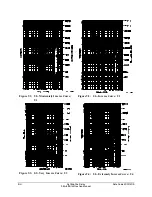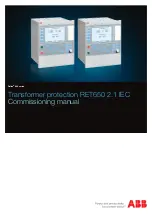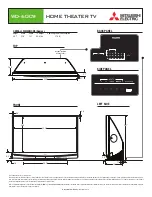
8-22
Breaker Monitor and Metering Functions
Date Code 20011205
SEL-311B Instruction Manual
Thermal Demand Meter Response (EDEM = THM)
The response of the thermal demand meter in Figure 8.11 (middle) to the step current input (top)
is analogous to the parallel RC circuit in Figure 8.12.
Figure 8.12: Current I
S
Applied to Parallel RC Circuit
In the analogy:
Current I
S
in Figure 8.12 corresponds to the step current input in Figure 8.11 (top).
Voltage V
C
across the capacitor in Figure 8.12 corresponds to the response of the
thermal demand meter in Figure 8.11 (middle).
If current I
S
in Figure 8.12 has been at zero (I
S
= 0.0 per unit) for some time, voltage V
C
across
the capacitor in Figure 8.12 is also at zero (V
C
= 0.0 per unit). If current I
S
is suddenly stepped
up to some constant value (I
S
= 1.0 per unit), voltage V
C
across the capacitor starts to rise toward
the 1.0 per unit value. This voltage rise across the capacitor is analogous to the response of the
thermal demand meter in Figure 8.11 (middle) to the step current input (top).
In general, just as voltage V
C
across the capacitor in Figure 8.12 cannot change instantaneously,
the thermal demand meter response cannot change instantaneously for increasing or decreasing
current. The thermal demand meter response time is based on the demand meter time constant
setting DMTC (see Table 8.3). Note in Figure 8.11, the thermal demand meter response (middle)
is at 90 percent (0.9 per unit) of full applied value (1.0 per unit) after a time period equal to
setting DMTC = 15 minutes, referenced to when the step current input is first applied.
The SEL-311B Relay updates thermal demand values approximately every 2 seconds.
Rolling Demand Meter Response (EDEM = ROL)
The response of the rolling demand meter in Figure 8.11 (bottom) to the step current input (top)
is calculated with a sliding time-window arithmetic average calculation. The width of the sliding
time-window is equal to the demand meter time constant setting DMTC (see Table 8.3). Note in
Figure 8.11, the rolling demand meter response (bottom) is at 100 percent (1.0 per unit) of full
applied value (1.0 per unit) after a time period equal to setting DMTC = 15 minutes, referenced
to when the step current input is first applied.
Summary of Contents for SEL-311B
Page 6: ......
Page 8: ......
Page 10: ......
Page 24: ......
Page 26: ......
Page 122: ......
Page 124: ......
Page 138: ......
Page 168: ......
Page 172: ......
Page 254: ......
Page 282: ......
Page 306: ......
Page 348: ......
Page 364: ......
Page 366: ......
Page 448: ......
Page 460: ......
Page 466: ......
Page 476: ......
Page 482: ......
Page 494: ......
Page 500: ......
Page 522: ......
Page 526: ......
Page 528: ......
Page 534: ......
Page 536: ......
Page 550: ......
Page 570: ......
Page 586: ......
Page 600: ......

